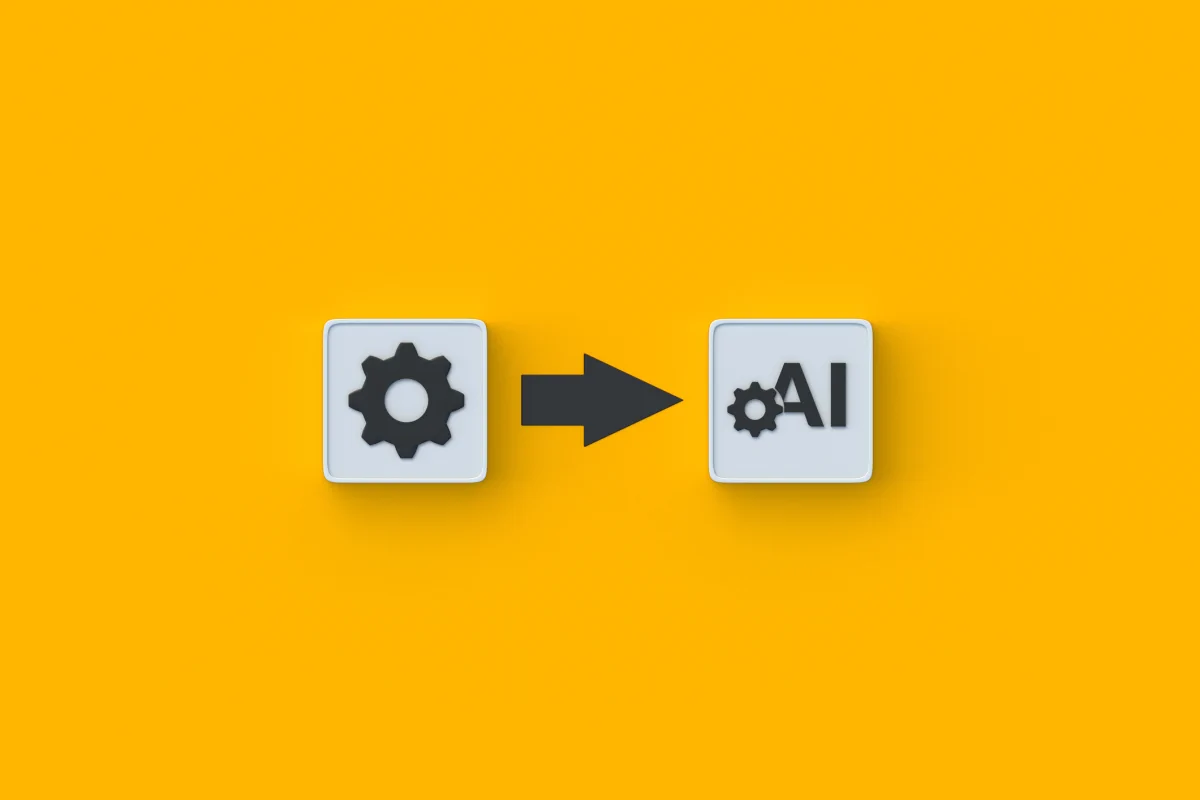The 2020 pandemic has resulted in a paradigm shift toward e-learning globally. The value of the e-learning market skyrocketed to a staggering $399.3 billion in 2022 and is expected to grow at a rate of 14% annually from 2023 to 2032. This digital transformation is reshaping how we learn and train with Learning Management System (LMS) software at its centre.
$399.3 billion
The value of the e-learning market skyrocketed to a staggering $399.3 billion in 2022 and is expected to grow at a rate of 14% annually from 2023 to 2032.
LMS plays a crucial role in modern education, reducing the manual administrative workload and delivering simplified training.
Moreover, the convenience lies in its ability to effortlessly handle the creation, organisation, and monitoring of training processes within a unified platform.
Table of Contents
- What is Learning Management System (LMS) software?
- 15 essential Learning Management System features
- Integrate Digital Samba’s video calling into your LMS
This article will discuss the types of learning management system software and explore the LMS features list.
What is Learning Management System (LMS) software?
A learning management system (LMS) is a web-based tool designed to strategize, execute, and evaluate specific learning endeavours. Primarily tailored for e-learning applications, its fundamental structure comprises a central server that executes core functions and an accessible user interface (UI) managed by educators, learners, and administrators.
An LMS enables instructors to create and provide educational materials to students, oversee their engagement, and assess their performance. Some LMS examples include Moodle, PowerSchool's Schoology Learning, and Anthology's Blackboard Learn.
Here are different types of LMS catering to unique users’ needs and preferences.
SaaS LMS (Cloud-Based)
Installed LMS (On-premise)
Open-Source LMS
Commercial LMS
Custom-built LMS
15 essential Learning Management System features
In the current market, the multitude of available LMS choices can be daunting for businesses striving to select the right LMS solution.
Here is a list of top learning management system features and benefits that will help you understand what makes a good learning management system.

The Benefits of Virtual Classroom Training: Exploring Online Learning
Learn more
1. User-friendly user interface
A well-designed UI simplifies navigation and accessibility for all users, ensuring a smooth learning experience. Navigating an LMS should be intuitive, regardless of a user's technical proficiency.
A streamlined interface minimises the learning curve and promotes efficient interaction with the platform. Visual cues, clear menus, and logically organised content contribute to a user-centric experience, boosting engagement and reducing friction.
2. Built-in reporting & analytics dashboard
In the age of data-driven decision-making, LMS software's built-in reporting and analytics dashboards are crucial. Similarly, partnering with an educational software development company can further enhance the effectiveness of LMS by customizing it to meet specific educational needs and goals. Instructors and administrators can glean insights into learner engagement, course completion rates, assessment performance, and more.
These actionable analytics facilitate ongoing course refinement and personalised learning paths, ultimately enhancing learner outcomes.
3. Mobile learning
With smartphones becoming extensions of individuals' lives, mobile-first learning has emerged as a natural progression of digital transformation. An LMS featuring a responsive design or a dedicated mobile app empowers learners to access content anytime, anywhere. This flexibility caters to the modern learner's on-the-go lifestyle, enabling continuous learning without geographical constraints.
4. Integration capabilities
The strength of an LMS often lies in its capability to integrate seamlessly with other tools and systems. Integration with video conferencing platforms, content libraries, and human resources systems creates a holistic learning ecosystem. Learners experience a unified environment, and administrators can efficiently manage user data, content, and performance metrics.
5. Course creation & management
Empowering educators to craft engaging courses is pivotal. The course creation and management feature should offer a variety of content formats, such as text, videos, quizzes, and interactive elements. The ability to organise content hierarchically ensures logical progression, and features like templates expedite course development.
6. Communication & collaboration tools
Learning thrives in a collaborative environment. LMS software should include communication tools like discussion boards, live chats, and group projects. Learners can interact with peers and instructors, fostering engagement and knowledge exchange. Real-time collaboration nurtures a sense of community, even in virtual classrooms.
7. Multi-lingual support
The global nature of education requires multi-lingual support to break down language barriers and increase accessibility to education. A diverse audience benefits from the ability to access content in their preferred language. This inclusivity extends the LMS's reach and makes learning more accessible to learners from different linguistic backgrounds.
8. Automated alerts & notifications
Staying engaged and informed is essential for successful learning. Automated alerts and notifications keep learners updated on deadlines, new content, and upcoming events. Instructors can communicate important announcements, ensuring timely participation and reducing the likelihood of missed opportunities.
9. Security & compliance
In this era of data breaches and privacy concerns, robust security and compliance features are paramount. LMS software should incorporate data encryption, secure authentication methods, and compliance with regulations like GDPR. Ensuring the confidentiality and integrity of the learner’s data builds trust in the learning environment.
10. Gamification
Gamification transforms learning into an engaging and rewarding experience. Incorporating elements like quizzes, badges, and leaderboards into a Learning Management System (LMS) motivates learners by tapping into their natural inclination toward competition and achievement. Gamification enhances motivation, reinforces learning, and adds an element of fun to the educational journey.
11. Social learning tools
Learning is often enhanced through peer interaction and knowledge sharing. Social learning tools such as discussion boards, forums, and social media integration into LMS enable learners to collaborate, share insights, and collectively solve problems. Peer engagement fosters a sense of belonging and mutual support.
12. Scalability
As educational needs expand, an LMS's scalability becomes crucial. The software should accommodate growing users, courses, and content without compromising performance. Scalability ensures that the platform remains responsive and functional despite increasing user demands.
13. Assessment & evaluation features
An LMS should offer diverse assessment options, including quizzes, assignments, and peer evaluations. Instructors can gauge learners’ abilities and adapt teaching strategies accordingly. Varied assessment methods cater to different learning styles and provide a holistic evaluation of learners' skills.
14. Certificates
Recognizing and celebrating learner achievements is essential for motivation. The LMS's certificate feature automates the generation of digital certificates upon course completion. This tangible reward validates learners' efforts and enhances their sense of accomplishment.
15. Blended learning
The feature of blended learning bridges the gap between traditional and online education. LMS software should support blended learning models by seamlessly integrating in-person and virtual elements. Blended learning accommodates diverse learning preferences and maximises the benefits of both approaches.

Explore Digital Samba`s features
Multi-user Video Conferencing, E2EE and more
Integrate Digital Samba’s video calling into your LMS
Incorporating a video conferencing feature within an LMS is a pivotal advancement in modern education. The multifaceted advantages it offers facilitate comprehensive and engaging learning experiences. By seamlessly integrating real-time video interactions, LMS software bridges the geographical gaps and fosters meaningful teacher-student and peer-to-peer connections.
However, universities and businesses may find implementing and maintaining an in-house video conferencing solution challenging.
Digital Samba Embedded offers a solution to overcome this challenge by enabling you to incorporate live video conferencing into your LMS. With its GDPR-compliant and end-to-end encrypted video conferencing, Digital Samba ensures data privacy and protection. Moreover, you can also customise the solution, giving each user an intuitive video conferencing experience.
Are you ready to elevate your e-learning journey by incorporating Digital Samba's video chat into your LMS? Schedule a demo with us today!
Share this
You May Also Like
These Related Stories
.jpeg)
What is an LMS? Explore Types, Features & Benefits

Best AI-Powered Tools for LMS

